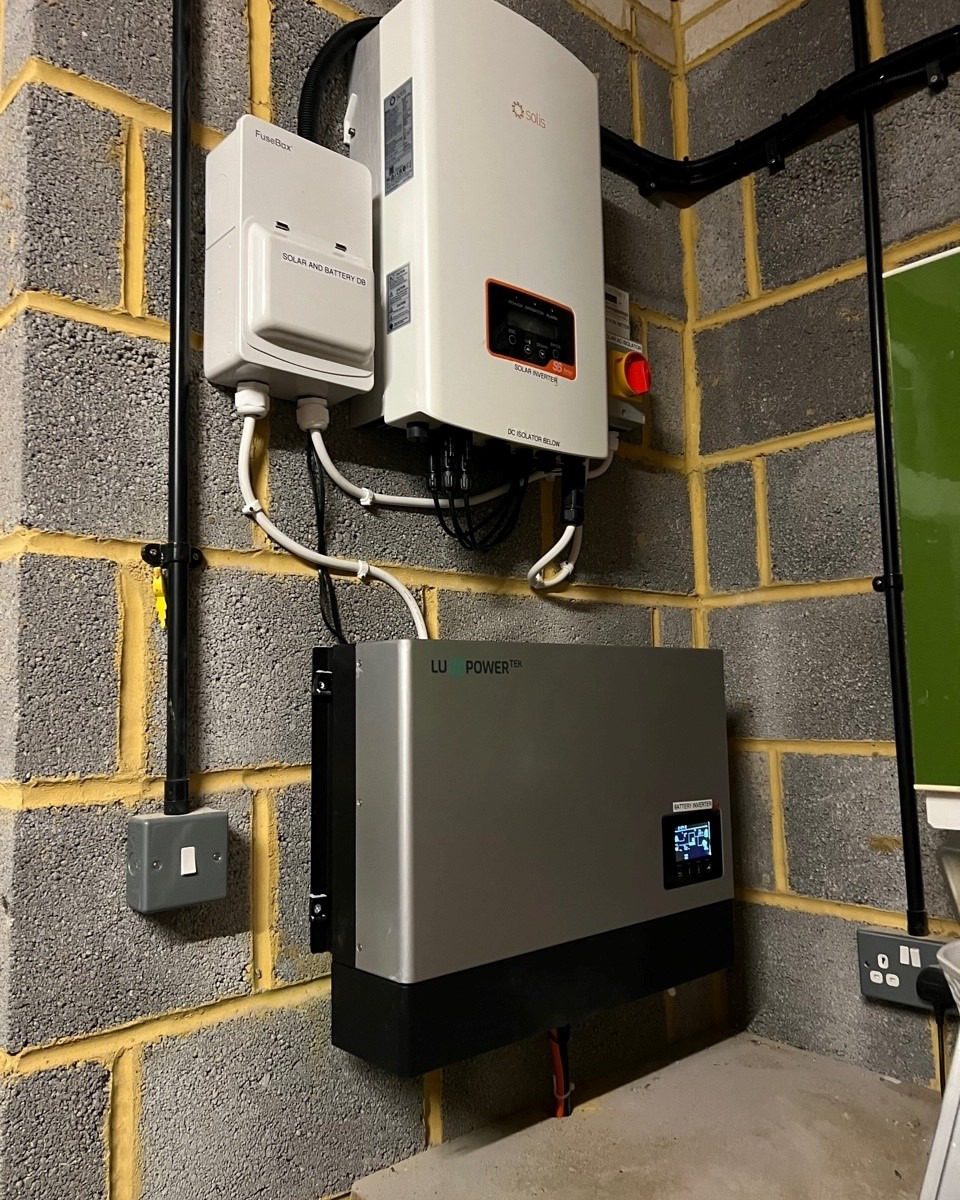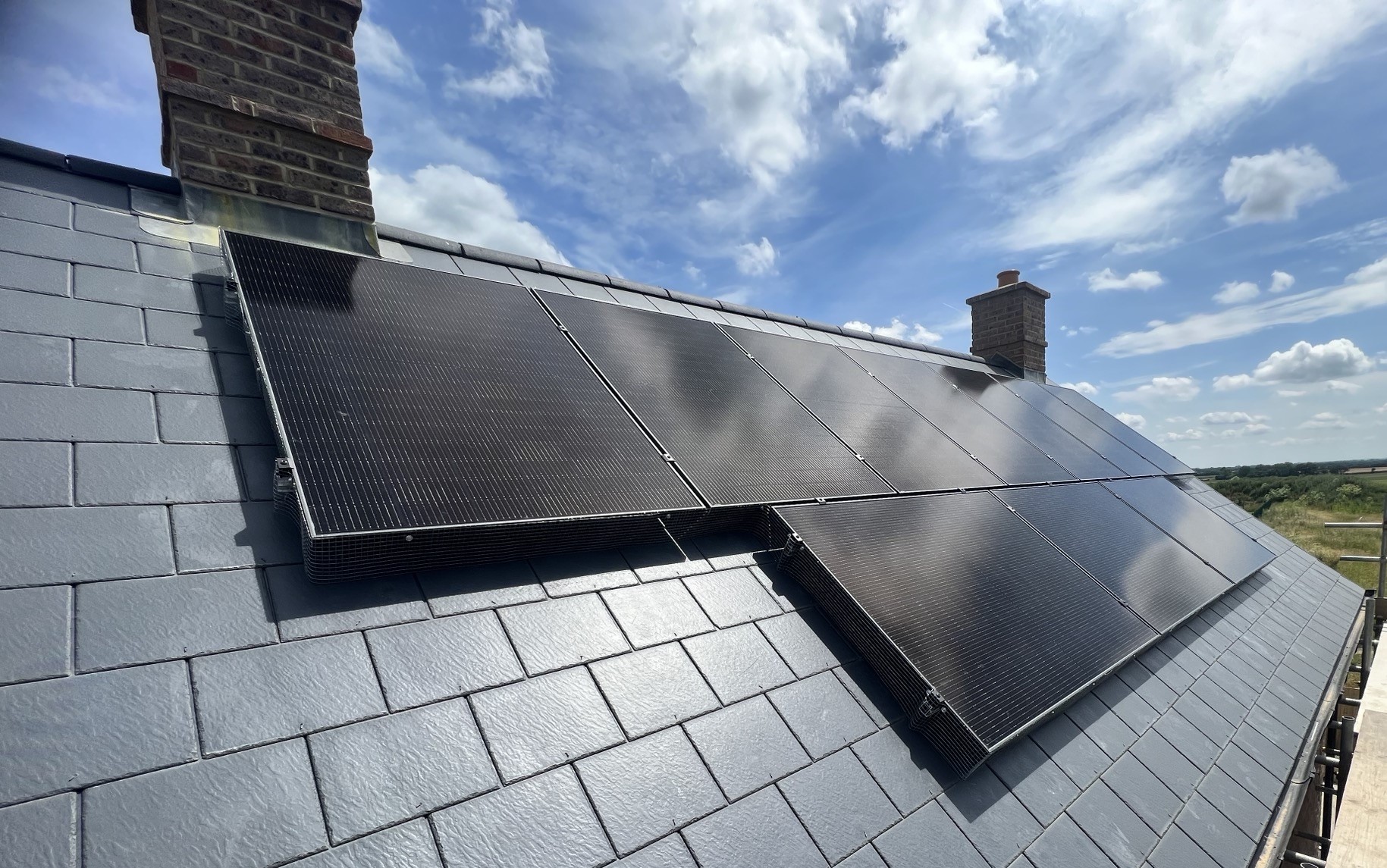When most people think of solar energy, they think of solar panels on the roof. A solar system will not work without the brains of the operation – the solar inverter – this is what makes the sunlight captured by your solar PV panels usable in your home.
At SolarTherm UK we install high-quality solar inverters, designed to work with your solar system. This article will break down what a solar inverter does, why you need it and how we choose the best one for you.
What Does a Solar Inverter Do?
Solar panels generate DC (direct current) electricity. This needs converting to AC (alternating current) electricity for use in your home, charge your solar battery and export back to the grid.
In short – if you don’t have a solar inverter, your solar panels are useless.
Types of Solar Inverter
There are three main types of solar inverter used in the UK:
- String inverters: these are the most common and cost effective inverter, they connect a string (group) of panels to one inverter and work best when there’s no shading or multiple arrays on different orientations of your roof (e.g east/west arrays).
- Hybrid inverters: combines your string inverter with battery storage capability.
- Microinverters: each panel has it’s own individual inverter, these are used when parts of your roof experiences shading or you are having panels installed on multiple orientations.
Why the Correct Solar Inverter Matters
- Efficiency: the efficiency of your solar inverter determines the efficiency of your solar system. Higher-efficiency inverters mean more solar energy is converted into usable electricity and more value from your panels.
- Monitoring and data: modern inverters offer real-time performance monitoring and tracking apps, allowing you to see how much you’re generating, using and exporting and making you aware sooner if there is an issue with your system.
- Longevity: your solar panels have a lifespan of 30+ years, so it’s important to choose a solar inverter that compliments your system and has a long lifespan. Most solar inverters tend to last 10-15 years before needing to be replaced so choosing a reliable brand with a solid warranty is crucial.
- Battery compatibility: if you are installing a solar battery or planning to install one in the future, a hybrid inverter is needed making your system ready from day one.
Do Solar Inverters Require Maintenance?
In general, solar inverters are low maintenance, provided they have been installed correctly. As they handle high-voltage electrical conversions they need to be installed in a ventilated and shaded area to prevent overheating. Check your monitoring app regularly for alerts or faults to give you a heads up when your system is underperforming, allowing you to repair in a timely manner.
When your solar inverter performance drops (usually after 10-15 years) you will need to replace or upgrade it. At SolarTherm UK we allow for upgrades and maintenance in your performance estimates, so the figures you are expecting should still be achievable even if you need to upgrade your system.
Choosing the Right Solar Inverter for Your Home
As the solar inverter plays such a vital role in your home solar system, it is important you choose the right one. At SolarTherm UK we will custom design your solar system so it works effectively with your property. Whether you need a string inverter, hybrid inverter or if microinverters are more suitable, our expert design team ask the right questions to help you decide which inverter is best for you.
Contact us for a free bespoke design and quote – no hard-sell, just honest, expert advice – we let the figures talk for themselves.
Your Home. Your Energy. Your Future.





